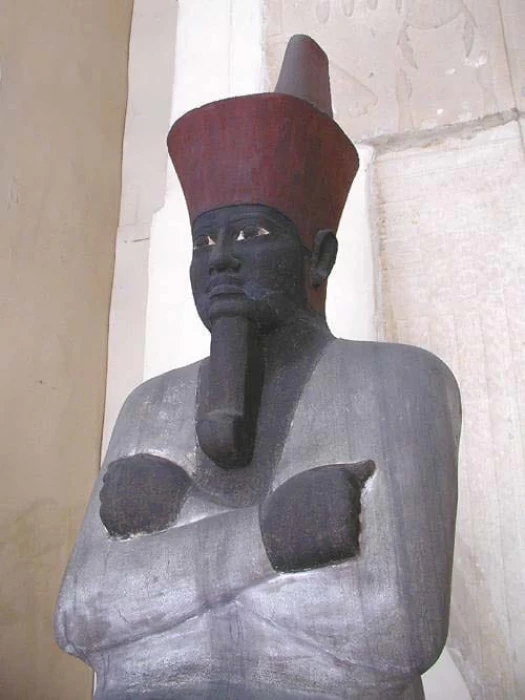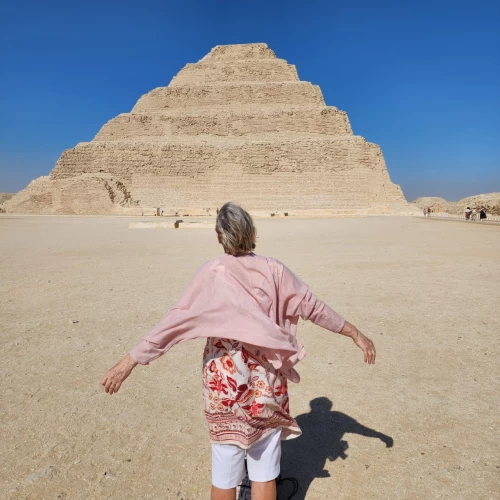
King Mentuhotep II | Last King of the 11th Dynasty
King Mentuhotep II
Nebhepetra Mentuhotep, also known as Mentuhotep II, was the founder of the Middle Kingdom of Egypt and ruled for roughly fifty years, from 2061 to 2010 BC. He belonged to the 11th dynasty of Egyptian pharaohs.
Also in the lists of Abydos and Saqqara, Sankhkara is considered the immediate predecessor of Shetepibra Ammenemes I, founder of the 12th dynasty and initiator of the period known to us as the Middle Kingdom.
Certain inscriptions on isolated stone blocks in various cities of Upper Egypt show that Sankhkara was a brisk builder of temples and chapels. A long inscription engraved on the rocks of Wadi Hammamat during his eighth year of reign reports that his steward Henu was sent there to direct the stone quarries for the statues to be placed in the sacred buildings.
He says he left Coptic with three thousand well-armed soldiers after a police force cleared the way of the rebels. On the way to the Red Sea, he had many wells excavated. The inscription also speaks of a fleet sent to Punt to make a 'myrrh recipe' and it was precisely on the return that the work was carried out on the stone quarry. It is rather problematic to establish where Sankhkara was buried.
Next to Deir el-Bahri to the south lies the wide and elevated hill of Sheikh Abd el-Qurna, and to the south of this, there is a valley more or less similar to the one chosen by Menthotpe I for his own grave, although very less picturesque, where you can see the vestiges of a wide elevated road and the beginning of a sloping tunnel. According to Winlock, this tunnel was hastily enlarged to form a burial chamber and then walled up.
It is however probable that Sankhkara was buried in those areas because, high on the cliffs that dominate the two valleys, the graffiti of the priests assigned to the funeral cult of the two Menthotpe remained.
Latest Articles
Admin
Seabourn Sojourn Cruise Stops in Safaga Port
The Seabourn Sojourn, the flagship vessel of Seabourn Cruise Line's ultra-luxury fleet, was built in 2008 at the T. Mariotti shipyard in Genoa, Italy. Measuring 198 metres, it can accommodate up to 450 guests in its 225 spacious all-suite staterooms.
Admin
Norwegian Sky Cruise Stops in Safaga Port
Norwegian Cruise Line operates a cruise ship called the Norwegian Sky. It was constructed in 1999 and can accommodate 2,004 passengers in addition to 878 crew members. The ship has several dining establishments, lounges and bars, a spa and fitness center, swimming pools, and a number of entertainment areas.
Admin
Explora II Cruise Stops in Safaga Port
Explora II, the second vessel in the Explora Journeys fleet, sets sail in 2024 to redefine luxury cruising. With 461 ocean-front suites, 9 culinary experiences, and 4 pools, this haven of sophistication and sustainability promises an unforgettable "Ocean State of Mind" journey to inspiring destinations.
Admin
Mein Schiff 6 Cruise Stops in Safaga Port
The Mein Schiff 6 is the latest cruise ship in the renowned TUI Cruises fleet, offering passengers a luxurious and sophisticated cruise experience. At 315 metres long, this floating resort features a range of dining options, entertainment, and recreational facilities, including a spa, fitness centre, and sports amenities.
Admin
Mein Schiff 4 Cruise Stops in Safaga Port
When the Mein Schiff 4 cruise ship docks in Safaga, Egypt, passengers are granted access to a realm of ancient wonders. Aboard this state-of-the-art vessel, guests can embark on meticulously curated shore excursions that showcase the region's most iconic landmarks, including the Giza Pyramids, the enigmatic Sphinx, and the remarkable tombs and temples of the Valley of the Kings in Luxor.
Admin
MS Europa Cruise Stops in Safaga Port
The Silver Moon, Silversea's latest flagship, is a luxury cruise ship that offers an exceptional travel experience for Venezuelans exploring Egypt. With a capacity of 596 guests and an impressive 40,700 gross tonnes, the Silver Moon maintains the small-ship intimacy and spacious all-suite accommodations that are the hallmarks of the Silversea brand.














